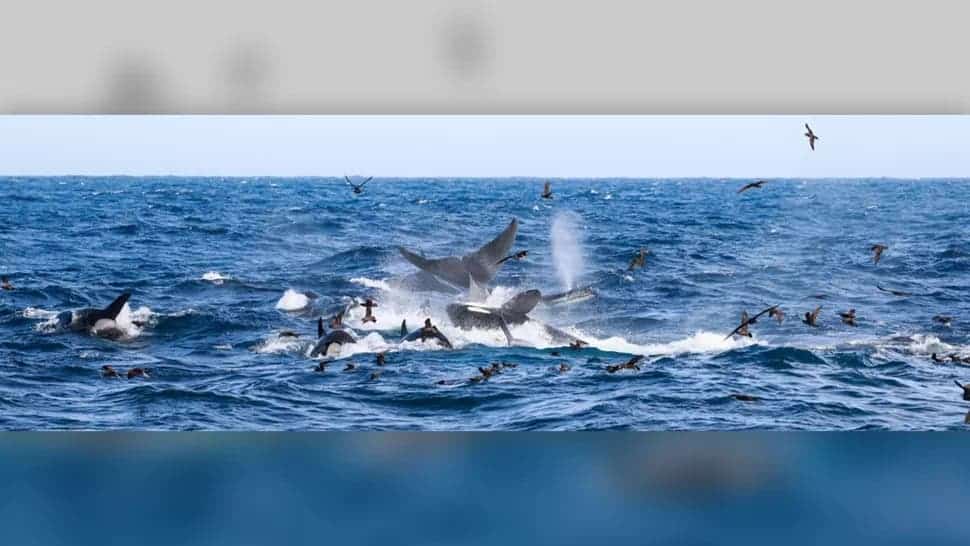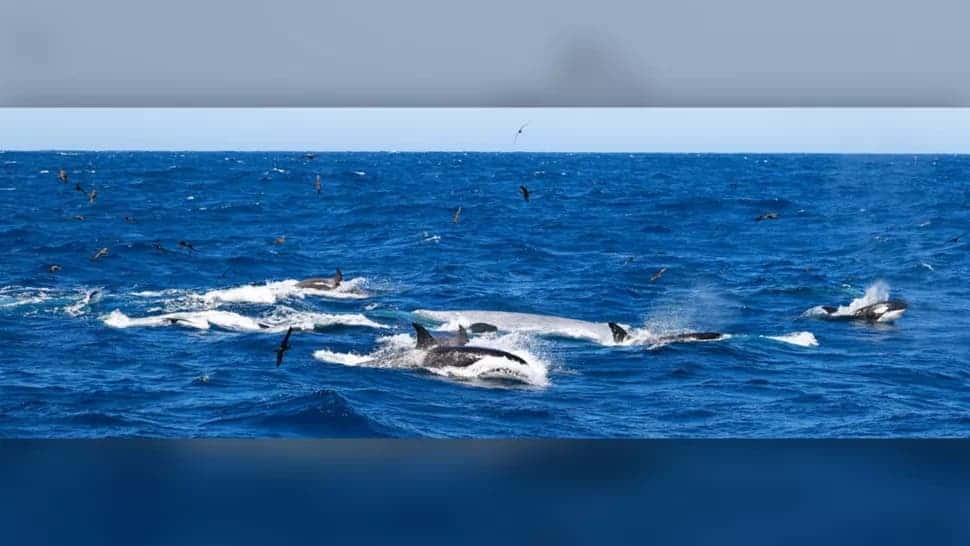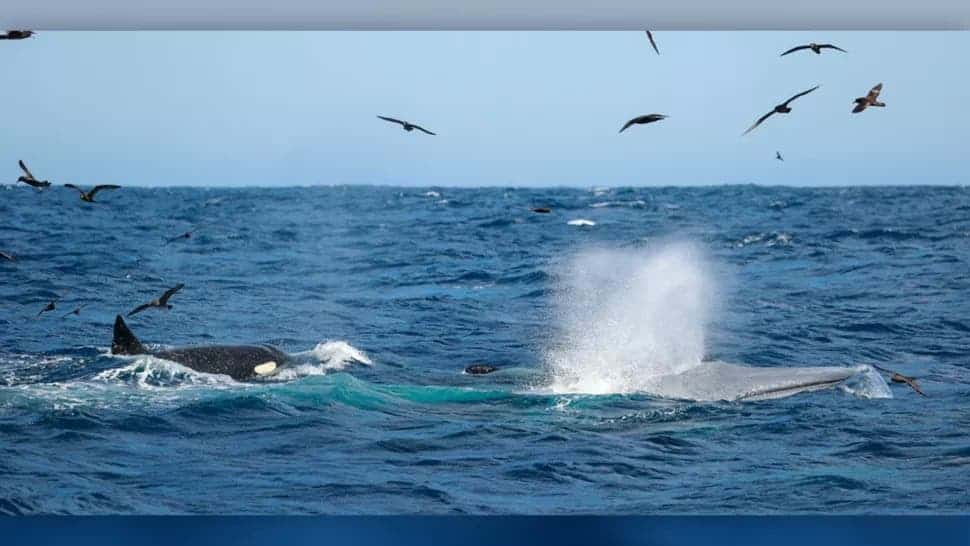
It was a blue-skyed day with calm waters while marine biologist Kristy Brown was out on a whale-watching tour off the coast of Western Australia. Pretty uneventful until Brown caught sight of a beautiful blue whale, slapping its tail above the water — but it wasn’t alone. What initially looked like a serene scene quickly turned into a horrific feeding frenzy as more than 70 orcas ganged up on the whale, chasing it for hours until they finally had their way.
Brown works for Naturaliste Charters, a company that operates whale-watching tours in Australia, so she has quite a bit of experience studying whales in their natural habitat. But she’s never seen anything like the “Orcas of Bremer Bay Canyon hunt” before March 16, which the marine biologist described in a blog post as something “that very few people have, or likely will, ever see in their lifetimes.”
“We came across the Orcas early today, virtually as soon as we got to the hotspot they were around. They were social and active, close passes across the stern bow and stern. The wind was ENE 18 knots, the swell 2.2m and dropping. White caps on the waves and the occasional bigger wave coming through. Morning vibe – just fun! Social animals, beautiful light, warmth of the sun. At least 2 pods around us, playing and surfing the waves, as we moved with them and watched and pondered. It looked like a mixture of cruising/playing with a little bit of food searching going in the mix. Yet they were alert, and they were engaged. The birds knew too, something was brewing underneath and at the time we had no idea,” she wrote.

The scene quickly changed themes after people on the boat started noticing the orcas were forming non-uniform waves. That’s atypical for them since surging orcas are usually spread wide and move loosely in one direction while hunting. This time, the orca surges were scattered and came in waves at the 16-meter-long (52-foot) blue whale.
The blue whale made the mistake to venture into the canyon system alone, where it was quickly surrounded by six big male orcas from different pods. A pod is a group of closely related matrilines that likely share a common maternal ancestor and is made up of mothers, daughters, sisters, cousins, and their children, including males.
Individuals hunt together in these tightly knit groups, each comprising 6-12 animals, sharing food among themselves, and communicating using sophisticated language. Remarkably, orcas, also known as killer whales, — which are actually a species of dolphins found in all oceans, from the frigid Arctic and Antarctic regions to tropical seas — can also imitate sounds from bottlenose dolphins, sea lions, and even humans.
Orcas may not be the biggest, strongest marine creatures out there, but their wit and cooperative hunting techniques make them into formidable apex predators. And as this gruesome hunt of the blue whale showed, they can be very strategic and patient.

“This scene was astounding, astonishing, a little bit disturbing and truly mind-blowing. I really am still processing it, and can barely comprehend it happened. The kind of scenes David Attenborough’s voice-over, or some dramatic classical music would fit. So the Blue whale wanted out, it wanted to swim away, and it tried hard. Over and over the Orcas nudged and jostled, pushed and pulled, and the animal kept swimming, near to the surface it stayed, occasionally diving but not deep, and each time it came up for a breath the orcas persisted. Tiring out the Blue was their goal. All around us more Orca kept coming in,” wrote Brown, who later counted as many as 70 different orcas engaged in the hunt, including juveniles.
“They were literally everywhere, and they were working together. They were driving this whale from the depths of the S bends within the Bremer Canyon system at 1000m of water and gradually forcing it onto the shallower continental shelf. This was their strategy, and they all seemed to know it. They worked together to force the Blue on the shelf, where depths were 80m. The breaches and tail slaps above, and a chaos of clicks and sounds from below as the Orcas pushed the Blue forward. But the Blue was gallant, it wouldn’t give up, it went under, and for a moment we thought it was all over, yet again and again its tail would rise up, thick and silver in the dark ocean, surrounded by black and thundering fins. The Orcas attached to it, fastening themselves to its jaw, as the whale spun and turned the Orcas held on, they wanted its tongue, were waiting for the jaw to release, but it would not.”

This grueling hunt went on for hours, until at around 3:00 pm the blue whale finally succumbed, with a bubble of blood rising to the surface “like a bursting red balloon” for all to see. Surrounding the red patch in the middle of the ocean were numerous red-stained black fins, circling the carcass of their prey. A hammerhead shark and long-finned pilot whales showed up to the feast, drawn by the smell of blood, but they were not allowed to scavenge, as the orcas fought them back.
“The Blue Whale was defeated, it was courageous and wilful, completely overwhelmed. It was an honour to see the end of this animal’s life. The tail of the Blue thrashed as it was dragged down. The awe of the moment did not cease, for the Orcas were sharing their prize, dividing up the carcass as it was shared with all involved in the depths below. We saw some blubber, only one hunk of flesh, and it was gone.”
Speaking to Live Science, Brown said this was the third time Naturaliste Charters recorded orcas hunting a blue whale. “Both of these were in April 2019, and were two weeks apart,” she said. The pandemic suspended trips in 2020, therefore Brown doesn’t know if more such events took place last year.


